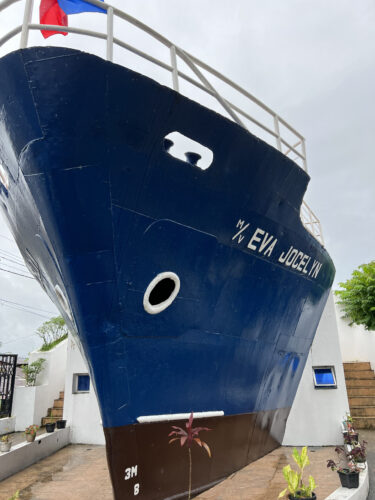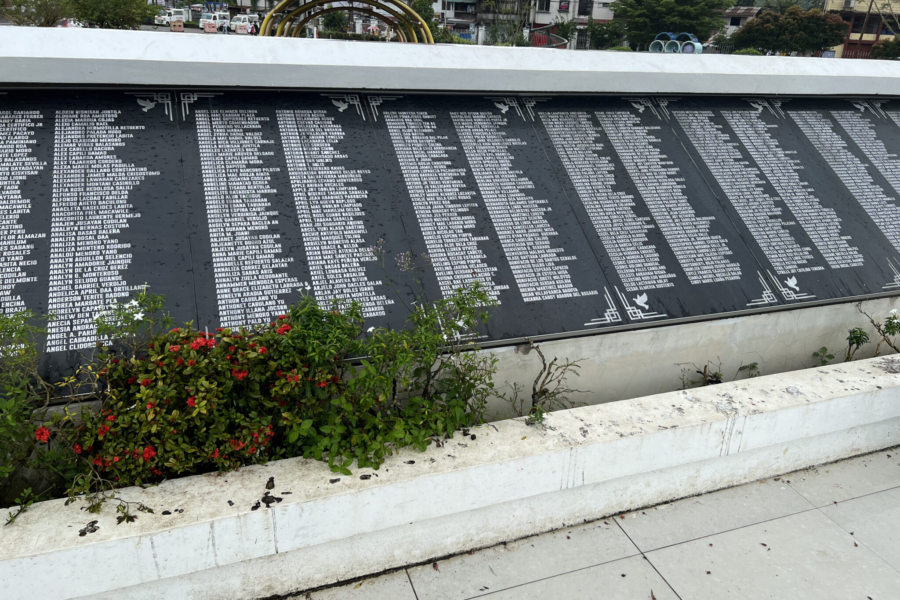When I first started at Children Incorporated in May of 2014, I remember hearing a lot about our relief efforts in the Philippines after Typhoon Haiyan, which had devastated areas of southeast Asia in November 2013.
I recall clearly stories from our staff about the damage that had occurred in Tacloban, where our affiliated site, the Visayans Center (which is run by non-profit organization, Volunteer for the Visayans, or VFV) was located. After the storm passed, it would be recorded as the country’s worst-ever natural disaster.
I had a chance to hear first-hand about how Typhoon Haiyan, known locally as Typhoon Yolanda, had affected every person in Tacloban.
Thankfully, in the aftermath, Children Incorporated was able to support families as as they rebuilt their homes, thanks to donations to our Hope In Action Fund, while still providing basic needs to children through our sponsorship program, which had become more important as the entire community of Tacloban worked to clean up, and for some, start all over again.
Since I was so new to the organization at the time, I didn’t realize the magnitude of the support we were able to offer, and it wouldn’t be until I visited Tacloban in early 2023 that I would come to find out just how detrimental the storm had been to thousands of people, forever changing the city and the way in which its residents lived.
I arrived in Tacloban after a short flight from Manila on a Thursday afternoon in January of this year, in anticipation of visiting three of our affiliated sites in the area over the course of the next four days. Our volunteer coordinators, WimWim and Ester, from VFV, were waiting for me outside of the airport with a small Children Incorporated sign with our logo and my name. After we got into the taxi, we drove through the small, coastal city towards the downtown area, and I had a chance to hear first-hand about how Typhoon Haiyan, known locally as Typhoon Yolanda, had affected every person in Tacloban.
WimWim talked about how the storms were so common in the Philippines that no one took the evacuation notices too seriously, thinking that it would pass, and little damage would occur as had happened many times in the past. Her husband and two young sons, she explained, stayed home to wait the storm out, but as the winds gradually became stronger and stronger, reaching top speeds of 165 mph, she realized that this storm was much more powerful than others she and her family had endured.
And just like everyone that lived through Typhoon Yolanda who has not forgotten it and never will, ten years later, Children Incorporated has not forgotten the people of Tacloban either.
As she described the water rushing into her house, I got chills thinking about the panic she must have felt. She explained that the water came so fast, they had no chance to get out of the house, and they quickly found themselves floating towards the ceiling as their furniture and belongings swarmed around them.
WimWim recalled almost losing hope that they would survive, when she realized there was a window open on the second floor of their home, and her and her family were able to escape to the roof and wait for the water to recede. It all lasted less than 10 minutes, but I am sure felt like a lifetime to them.

The ship, Evan Jocelyn, was one of three ships that ran aground during Typhoon Yolanda. Today, it remains on land as a memorial to the devastation caused in Tacloban.
When the storm ended and the weather turned calm, the local government reported that 6,000 residents of Tacloban had lost their lives, largely due to the storm surge that also damaged or destroyed 90% of the structures in the city. As WimWim described it, her town was unrecognizable, covered in debris and fallen trees. Large container ships had run aground, and entire neighborhoods on the coastline had been swept away to sea. WimWim promised she would take me to see some of the many monuments that had been constructed over the years in remembrance of those that lost their lives, many of whom were buried with just a simple white cross and no other identifying gravestone.
Not long after Typhoon Yolanda, relief organizations started arriving in Tacloban to provide for the immediate needs of families — depending on their contracts, according to WimWim, some organizations stayed for a few weeks, and some stayed for a few years.
Although the help was needed, and appreciated, in many ways it didn’t offer the sustainable support that she felt was vital to those living in poverty in Tacloban. Often times, aid organizations didn’t consult with locals about how to offer help in the ways that it was needed most — instead, administrators would determine how they felt they should help, which sometimes wasn’t helpful at all. As WimWim described it, it was a “good bad problem to have” — the good being that the aid organizations arrived at all, and the bad being that they didn’t listen to the locals needs.
Children Incorporated, she said, has never been one of types of organizations. Having worked with VFV since 2005, and still expanding on the work we do together today, we have offered VFV consistent and continuous support through very hard times in the community. WimWim proudly spoke of the power of sponsorship, and how grateful she was for the flexibility of our program that allows her to decide exactly what children and their families need depending on the circumstances. And just like everyone that lived through Typhoon Yolanda who has not forgotten it and never will, ten years later, Children Incorporated has not forgotten the people of Tacloban either.
***
How do I sponsor a child in the Philippines?
You can sponsor a child in the Philippines in one of three ways: call our office at 1-800-538-5381 and speak with one of our staff members; email us at sponsorship@children-inc.org; or go online to our sponsorship portal, create an account, and search for a child in the Philippines that is available for sponsorship.


